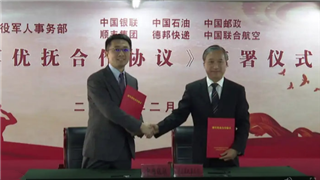
Editor's note: Keeping in mind the "two sessions", which began on Friday, the Guanghua School of Management, Peking University, held a seminar recently to discuss China's economic outlook and policy proposals for 2022. Following are excerpts from the speeches delivered by three of the experts at the seminar:
More active policies needed to boost growth
The top priority of the economic policy this year should be aimed at promoting steady growth. To achieve high-quality growth, the country should not focus on GDP growth alone but also think in the long term and increase investment in industries, in order to help strengthen its core competencies, and promote innovation.
China overtook the United States as the world's largest manufacturing country and Japan as the second-largest economy in 2010. However, since then China's growth has slowed down because of its exceptionally large economy.
To sustain economic growth, a country needs to continuously increase investment and production. While new technology generally comes with new capital, it is necessary to increase investment in basic and core industries to boost high-quality development.
For instance, to meet the goal of reducing carbon emissions in line with the Paris Agreement, the world needs to invest about $131 trillion from 2021 to 2050. And to ensure its carbon emissions peak before 2030 and it realizes carbon neutrality before 2060, China needs to invest nearly 255 trillion yuan ($40.39 trillion) by 2050.
So apart from GDP growth, China should also take other factors into consideration when making macro policies to develop new economic growth drivers, build an ecological civilization and realize carbon neutrality, and help the country's 150 million market entities, including small and medium-sized enterprises and the self-employed, to cope with the challenges.
Liu Qiao, dean of the Guanghua School of Management
Supportive policies can help SMEs rebound
Small and medium-sized enterprises have generated more than 80 percent of employment in China, and played an important role in eradicating absolute poverty and promoting common prosperity.
But SMEs today face many challenges and uncertainties, because of both internal and external factors. According to a survey conducted by Peking University and Ant Group Research, SMEs' revenues and confidence declined slightly in the fourth quarter of 2021 compared with the third quarter, mainly because of frequent and sporadic COVID-19 outbreaks.
Insufficient demand is a common problem plaguing SMEs, especially for self-employed people providing consumer goods and services. The cost of running a business is still the main cause of concern for many owing to high rent, and rising raw material and labor costs. Last year, for example, the rising cost of production was the main cause of concern for manufacturing and construction companies.
But despite the difficulties they face, SMEs believe their success still largely depends on individual efforts. As a result, they have been taking measures to overcome the challenges and adapt themselves to the changes in the market.
Therefore, the government should take more measures to boost consumption. For those vulnerable groups with low income and the SMEs suffering from the effects of the pandemic, they should be offered financial aid and other forms of support. Stable macro and industrial policies could also help ease the burden of the SMEs.
The pandemic has increased uncertainties and the cost of doing business. As such, the authorities should take more scientific and targeted measures to minimize the pandemic's negative effects on SMEs, and help boost their capabilities and confidence.
In short, with policies aimed at addressing the pandemic-related problems and targeted anti-pandemic measures, SMEs will hopefully regain their confidence and rebound in 2022, and recruit more employees.
Zhang Xiaobo, a professor at the Guanghua School of Management
Fiscal policy key tool to promote growth
China's GDP growth is expected to be more than 5.5 percent this year. Growth has slowed down since the second half of 2021 because sporadic COVID-19 outbreaks have largely disrupted economic activity.
Weak consumption will be a major drag on the economy, despite consumption accounting for about 55 percent of China's GDP and contributing more than 60 percent to the country's economic growth. People generally tend to spend less if they are uncertain about their future.
When it comes to the long-term goals of peaking carbon emissions before 2030 and achieving carbon neutrality before 2060, local governments should treat the process as a marathon instead of a sprint, and avoid taking harsh measures that will drastically reduce local economic growth and affect residents' livelihoods.
That's why the Central Economic Work Conference, China's highest-level meeting on the economy, in December emphasized the importance of "stabilizing" economic growth.
Also, the government should consider lifting some of the strict restrictions on the real estate sector, especially because realty giant Evergrande's debt problem has made it difficult for some private property developers to get financing. For example, reducing down payments and mortgage rates could help many new potential homebuyers fulfill their housing needs.
Yan Se, an associate professor at the Guanghua School of Management
The views don't necessarily reflect those of China Daily.











